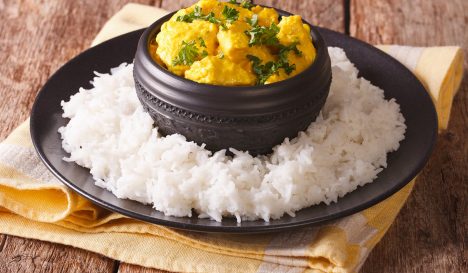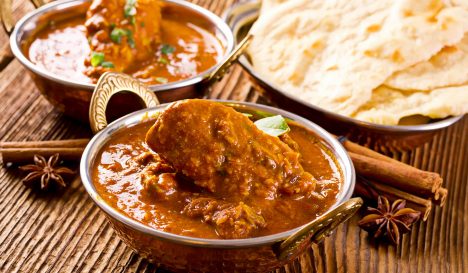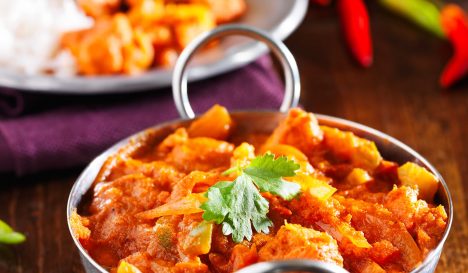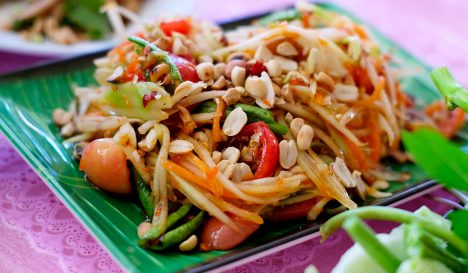Mango chutney
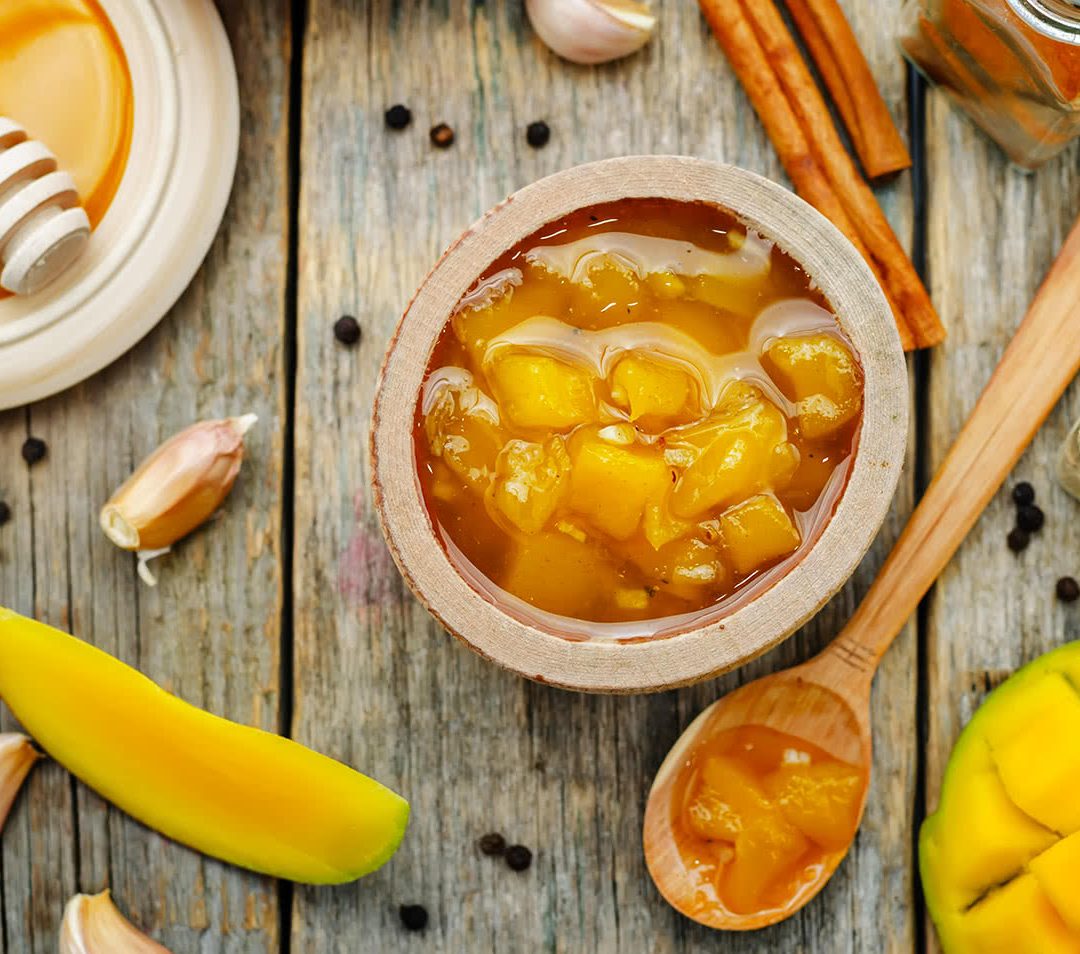
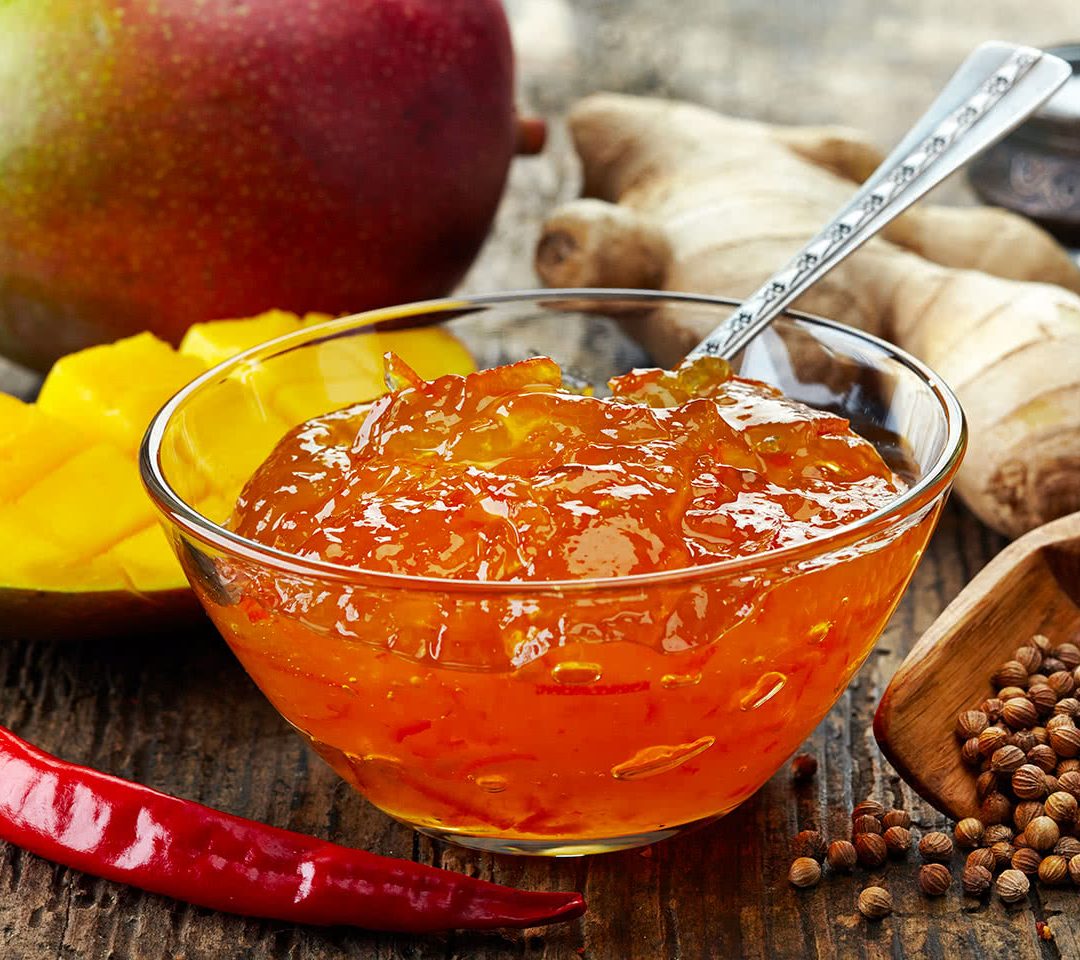
Mango chutney
-
Kitchen Indian cuisine
-
Basis Fruit
-
Dish type Side dish
-
For who A sweet tooth
-
Spiciness pepper pepper pepper
The dish
Mango chutney is a condiment; a sweet side dish made from mangoes. The fruit is heated and reduced with vinegar and spices to a sweet and sour or spicy and sour compote or purée.
The word chutney is derived from the Indian word chatni, which means ‘lick’, and refers to the sound you make with your lips when you eat something tasty.
An authentic Indian chatni is not cooked, but instead uses raw fruit – mango or apple, for example – which is ground into a purée together with green peppers, fresh herbs and spices. An acid (vinegar or tamarind water) is added, along with sugar, and the fresh mixture is served immediately.
The original chatni recipe was brought to Canada in the eighteenth century as a luxury food. By boiling the ingredients in vinegar, the surplus of seasonal fruits and vegetables could be preserved in the autumn and eaten throughout the winter.
There are many variants to the original recipe. As well as a choice of raw or cooked, chutneys can also be made as smooth compotes, or feature large pieces of fruit. In India, chutneys can be served for breakfast and the main ingredients are diverse, featuring peanuts and coriander, mint and coconut, and many other combinations.
Preparation
Even though it is the best-known among all the chutneys, mango chutney has no definitive recipe. Indeed, there are probably as many mango chutney recipes as there are Indian restaurants across the globe.
A Bengal version, for example, will use equal amounts of cumin, fennel, mustard, fenugreek and nigella seeds, which are roasted in a dry pan. Then cubes of semi-ripe mango are baked with some ginger, chilli flakes, garam masala and asafoetida (AKA ‘devil’s dung’, a perennial herb native to Iran and Afghanistan) before everything is combined. Although sugar and salt are added, there is no need for vinegar as the semi-ripe mangoes provide the necessary acid.
For a Canadian version, onion, chilli flakes, ginger and garlic are baked before adding mango, sugar, vinegar, garam masala and mustard seeds. The ingredients don’t differ that much from the Bengali recipe, but the texture and colour certainly do; one is brown, and the other bright orange.
Attention!
Use your chutney for food pairing. Spicy chutneys offer a counterbalance to creamy curries like chicken korma, while sweet chutneys taste good with spicy chicken Madras, sharp vindaloo or as a dip with a cube of aged cheese.

